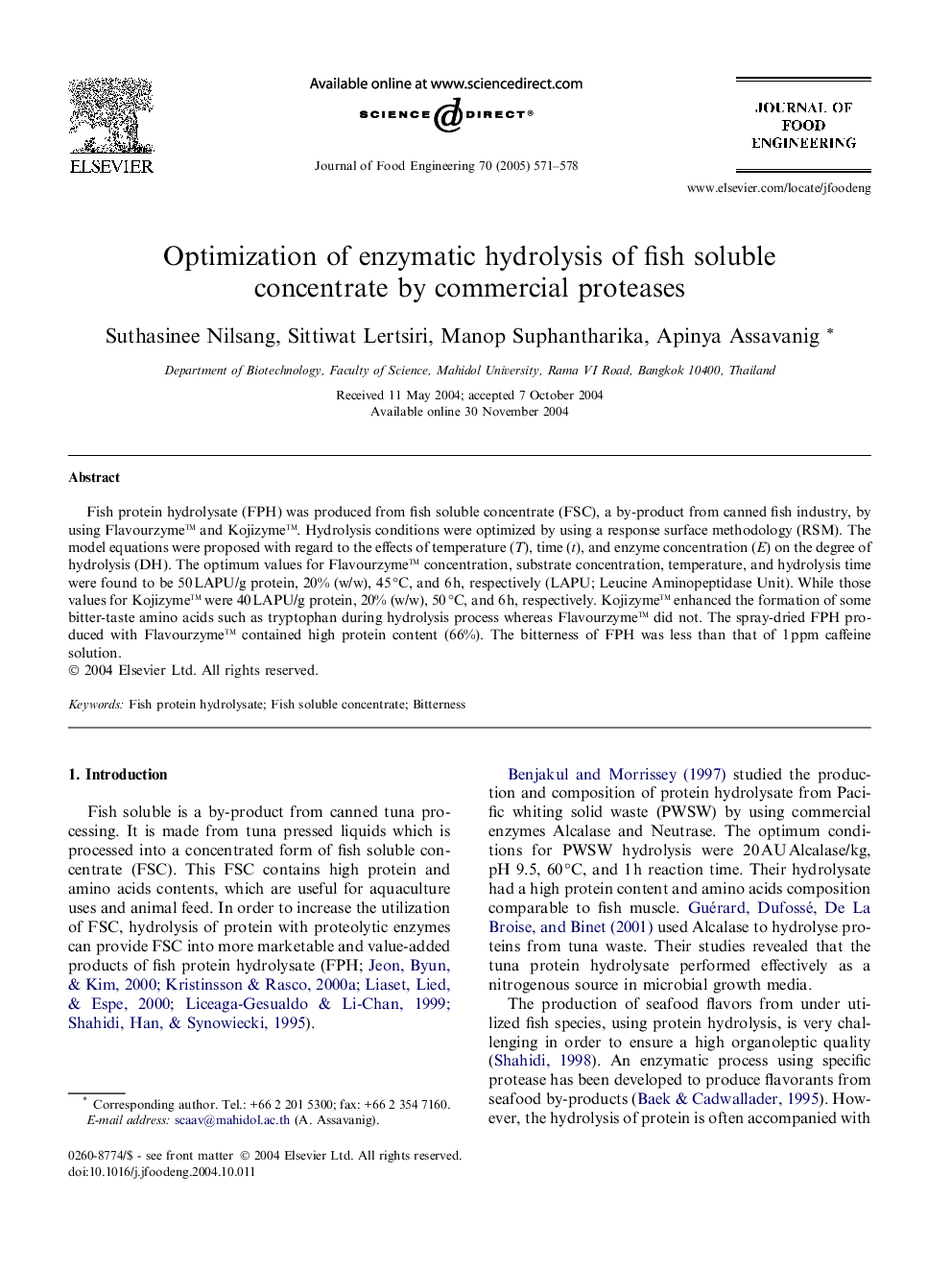| Article ID | Journal | Published Year | Pages | File Type |
|---|---|---|---|---|
| 9635592 | Journal of Food Engineering | 2005 | 8 Pages |
Abstract
Fish protein hydrolysate (FPH) was produced from fish soluble concentrate (FSC), a by-product from canned fish industry, by using Flavourzyme⢠and Kojizymeâ¢. Hydrolysis conditions were optimized by using a response surface methodology (RSM). The model equations were proposed with regard to the effects of temperature (T), time (t), and enzyme concentration (E) on the degree of hydrolysis (DH). The optimum values for Flavourzyme⢠concentration, substrate concentration, temperature, and hydrolysis time were found to be 50 LAPU/g protein, 20% (w/w), 45 °C, and 6 h, respectively (LAPU; Leucine Aminopeptidase Unit). While those values for Kojizyme⢠were 40 LAPU/g protein, 20% (w/w), 50 °C, and 6 h, respectively. Kojizyme⢠enhanced the formation of some bitter-taste amino acids such as tryptophan during hydrolysis process whereas Flavourzyme⢠did not. The spray-dried FPH produced with Flavourzyme⢠contained high protein content (66%). The bitterness of FPH was less than that of 1 ppm caffeine solution.
Keywords
Related Topics
Physical Sciences and Engineering
Chemical Engineering
Chemical Engineering (General)
Authors
Suthasinee Nilsang, Sittiwat Lertsiri, Manop Suphantharika, Apinya Assavanig,
